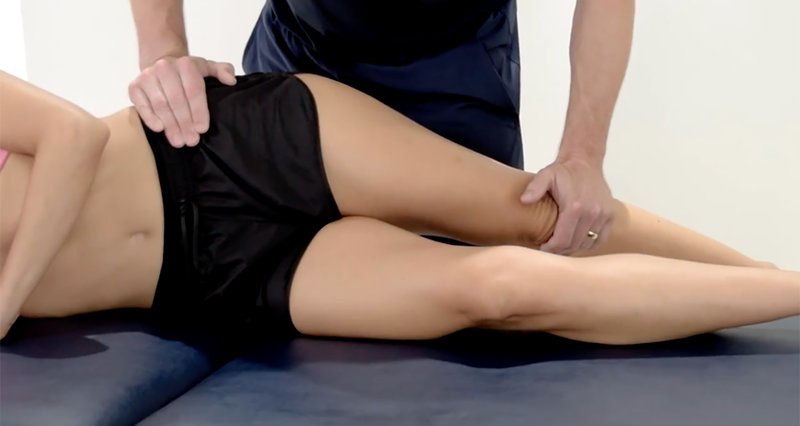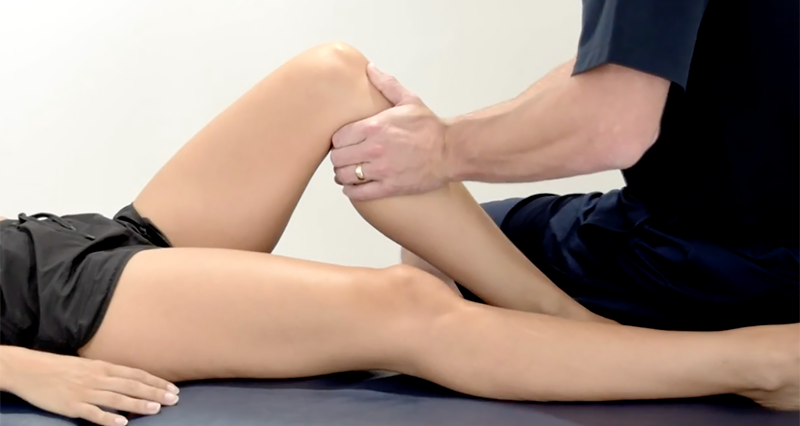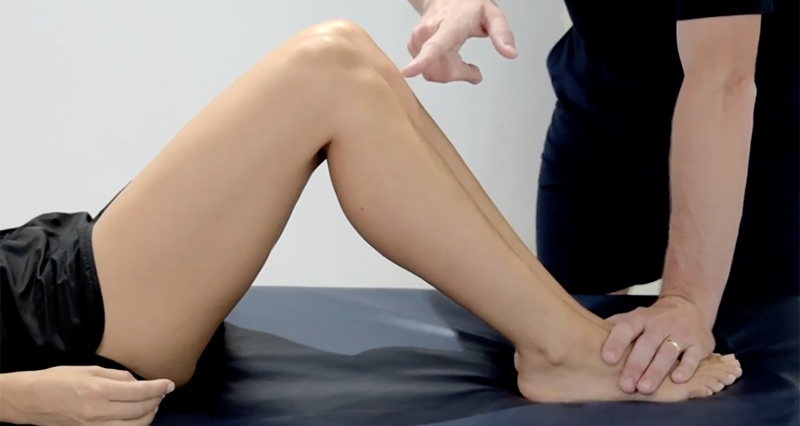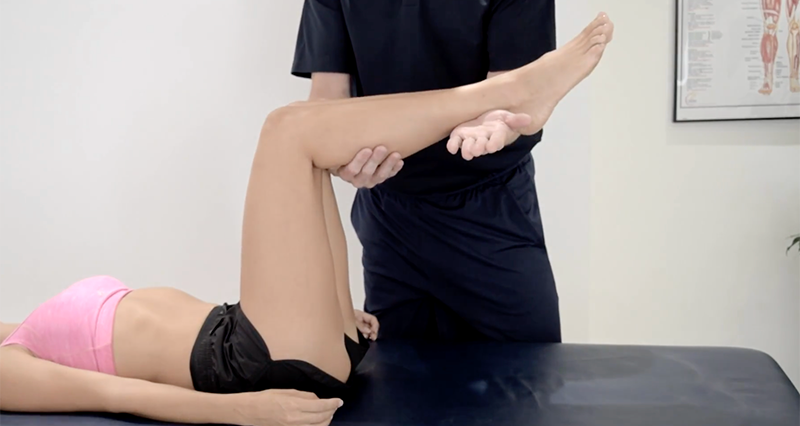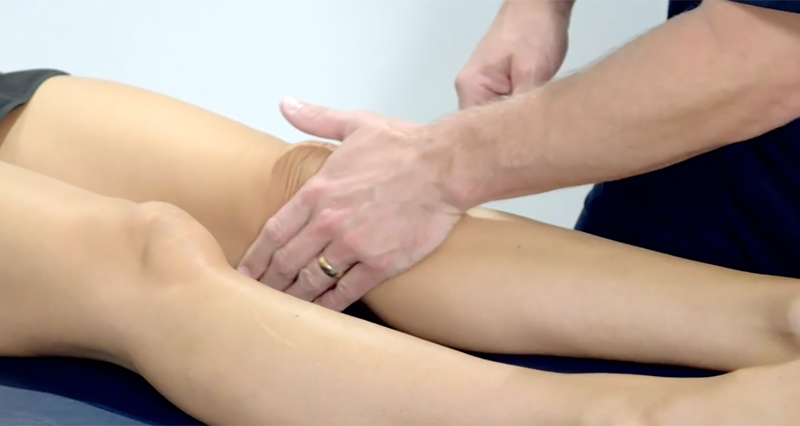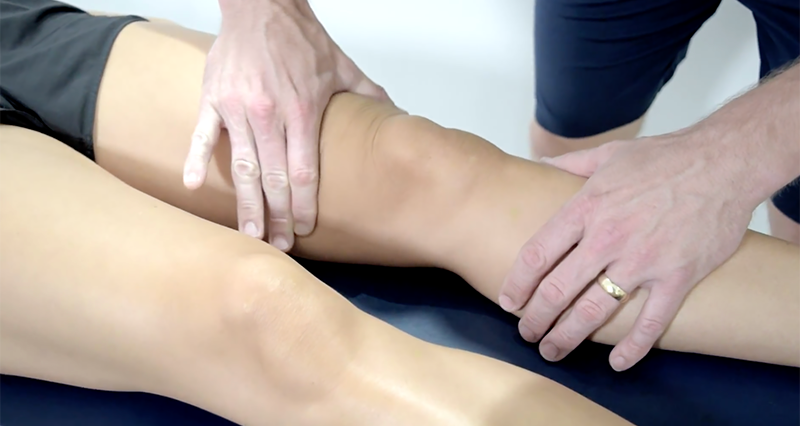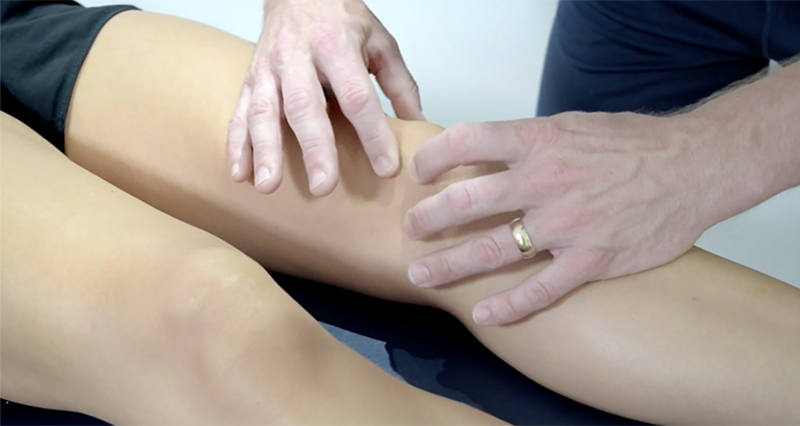Clinicians use the “Thessaly Test” as a clinical tool to diagnose meniscal tears in the knee. The meniscus is a piece of cartilage in your knee that cushions and stabilizes the joint. This can sustain damage or tears, resulting in pain, swelling, and mobility issues.
What is a Meniscus tear?
A lateral meniscus tear involves damage to the semi-circular cartilage on the outside of the knee joint. This injury can emerge suddenly from actions like twisting or from a traumatic collision. Alternatively, it might develop slowly due to wear and tear or excessive use.
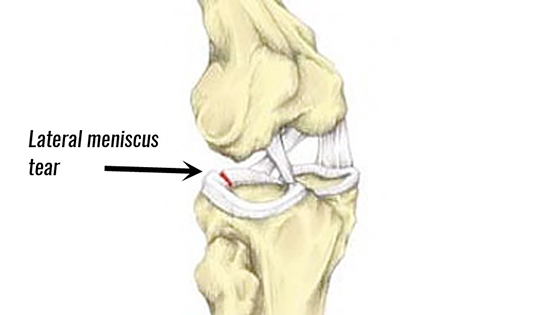
A medial meniscus tear occurs more commonly on the inside of the knee. It often results from a direct impact during contact sports or from twisting movements. Like its lateral counterpart, it can also appear in older athletes due to gradual cartilage degeneration.
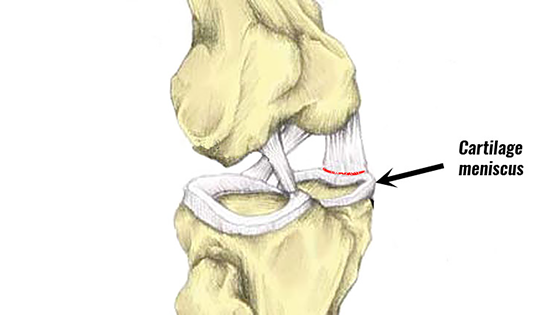
How to perform the Thessaly test:
The patient stands firmly on the ground. Support them by holding their hands or shoulders for balance while putting weight on the tested leg. Then, the patient bends their knee to approximately 20 degrees. However, It’s crucial for the patient to avoid fully extending or deeply flexing the knee during this test.
Following that, the patient rotates their body and knee internally and externally three times. Each rotation should last about 3 seconds. Additionally, the clinician may apply manual rotation to the knee during the test.
Throughout the procedure, the clinician carefully observes the patient for signs of discomfort, pain, or a “clicking” sound in the knee, as these may indicate a meniscal tear.

What is a positive Thessaly test?
During the medial or lateral rotation of the knee, if the Thessaly test causes pain or a clicking sound, clinicians consider it positive. This test aims to stress the meniscus to identify tears.
Considerations
In clinical settings, practitioners use the Thessaly test as a simple yet valuable tool to assess potential meniscal injuries. However, it’s important to recognize that while a positive Thessaly test may indicate pain or a clicking sound, it doesn’t solely define diagnosing meniscal injuries. Typically, clinicians rely on a combination of physical examination, patient history, and imaging tests like MRI for an accurate diagnosis.
